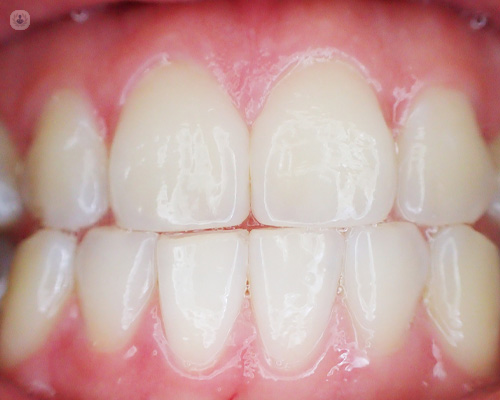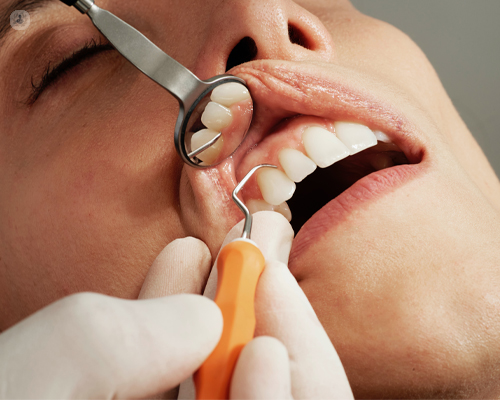Gum abscesses and gum boils: treatments, causes and more
Written in association with:Abscesses in the mouth are relatively common and can occur for various reasons. They can be unpleasant and cause the sufferer a significant amount of pain. Dr Mark Hughes, an expert dentist and founder of the Harley Street Dental Studio, tells us what gum abscesses are, and what a gum boil is, and how they can be treated.
Abscesses can affect different areas of the mouth, including the teeth, the gum tissue, and the soft tissues surrounding the crown of a tooth. Widely, abscesses in the mouth are known as dental abscesses, but certain types affect the gums (periodontal abscess) or the gum tissue (gingival abscess). In some cases, abscesses can cause a parulis, more commonly known as a gum boil. Gum boils and gum abscesses are not gum disease, however, gum abscesses can indicate the development of periodontitis.

Gum boils: what are they?
Gum boils are very common. A gum boil, or parulis, is a localised concentration of pus which occurs in the soft tissue of the gum. Gum boils usually look like a small pimple in the mouth, and are drainage points for abscesses which occur in the roots of the teeth.
What causes gum boils?
When the nerve of a tooth dies (necrosis), the body sends a multitude of white blood cells to the point where the nerve exits in an attempt to destroy the infection. This then forms an abscess as the cells die, and in some cases, the abscess can break through the gum tissue and form a gum boil, as a drainage point for the abscess.
Gum abscesses: what are they?
Aside from tooth abscesses, there are gum abscesses, which can affect the soft tissue, or the area at which the gum connects with the tooth, or periodontal pockets. Abscesses, in general, can be described as a localised collection of pus within the mouth's tissue, but gum abscesses are different from tooth abscesses in that they do not occur as a result of infection from a dead tooth, rather as bacterial infections associated with living teeth.
Gum abscess symptoms
One of the most significant symptoms of a gum abscess is pain, which often appears suddenly, and is characterised by being a deep, throbbing pain. Other symptoms include:
- the surface of the gums being shiny due to the mucosa stretching over the abscess
- redness
- swelling
- increasing pressure in the affected area, as pus forms
- a bad taste in the mouth and a bad smell may be perceived as pus drains
I have a gum boil with no pain. What are the symptoms?
Gum boils vary in size but can usually be seen clearly on the gum. The size is dependent on how much is produced deep in the tooth and how the patient's immune system responds. Many gum boils have no pain, and are painless in nature, but some can cause moderate pain, and they can come and go.

How to treat a gum boil and gum abscess
Gum abscess treatment and gum boil treatment focus on treating the underlying issue - in the case of gum boils, the dead or decaying tooth must be addressed. If the tooth is non-vital, it may be extracted. Once the underlying cause is treated, the gum boil will not re-occur.
Most gum abscesses heal successfully and quickly after the area is thoroughly cleaned, and the pus in the abscess is able to escape or allowed to escape. The underlying infection will also be treated, for example with the use of antibiotics.
In the case of large gum abscesses, they must be drained, but if the gum boils occur as a result of periodontal disease, the disease itself must be treated to prevent repeated infection. If the abscess started because of an infection inside the tooth, the abscess will need to be drained, followed usually by root canal treatment.
How to prevent gum abscesses and gum boils
As with most oral conditions, maintaining proper oral hygiene will help to prevent infections and the development of boils and abscesses. Annual or more frequent check-ups at the dentist are recommended to avoid conditions that can lead to abscesses and gum boils.
If you are concerned about recurring gum abscesses and/or gum boils and would like to consult an expert dentist, you can do just that by booking an appointment with Dr Hughes via his Top Doctor's profile.


